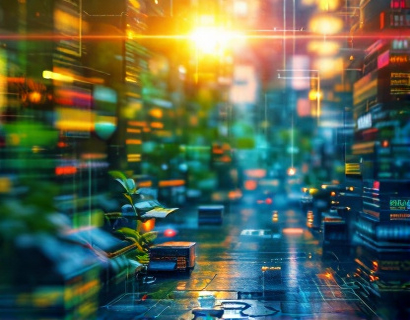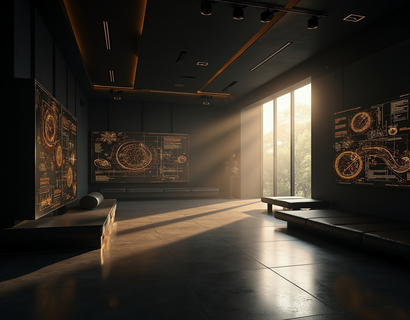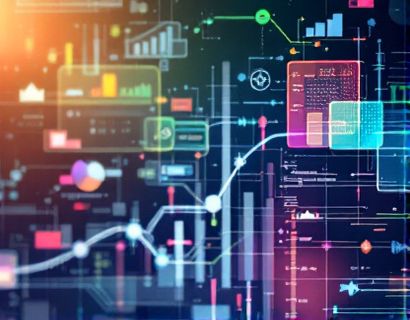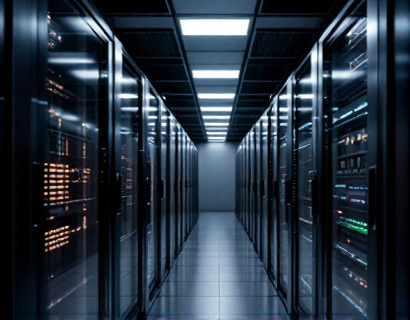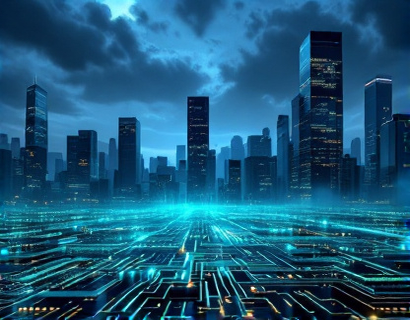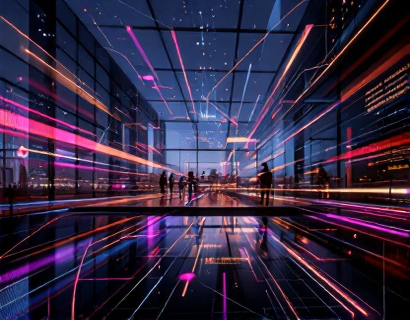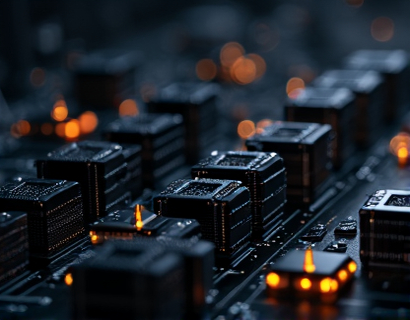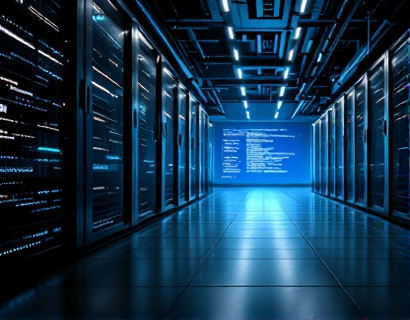Maximize Your Solarium's Potential: Cutting-Edge Tech for Optimal Indoor Plant Growth and Sustainability
In the realm of indoor gardening, the solarium stands as a testament to human innovation, offering a controlled environment where plants can thrive year-round, regardless of external weather conditions. To fully harness the potential of a solarium, integrating advanced technology is essential. This article delves into the cutting-edge solutions that transform light, climate, and automation into a symbiotic system, ensuring optimal plant growth and sustainability. By exploring these technologies, indoor gardening enthusiasts can create a high-tech garden oasis that not only elevates the gardening experience but also promotes environmental sustainability.
Optimizing Light for Plant Growth
Light is the primary energy source for photosynthesis, making it crucial for plant growth. In a solarium, artificial lighting systems can be tailored to mimic natural sunlight, providing the specific spectrum and intensity required by different plants. LED grow lights have revolutionized indoor gardening due to their energy efficiency and customizable light spectra. Unlike traditional fluorescent or HID lights, LEDs emit less heat and consume less power, making them ideal for enclosed spaces. Advanced LED systems can be programmed to adjust light cycles and intensity based on the growth stage of the plants, ensuring they receive the optimal amount of light at all times.
Another innovative approach is the use of dynamic lighting systems that simulate the natural sun's movement across the sky. These systems can adjust the angle and color temperature of the lights throughout the day, providing a more natural light cycle for the plants. This not only promotes healthier growth but also helps in regulating the plants' circadian rhythms, leading to better overall health and productivity. For instance, during the vegetative stage, a higher blue light spectrum is beneficial, while during the flowering stage, a richer red light spectrum is more effective.
Climate Control for Ideal Growing Conditions
Maintaining the right climate within a solarium is equally important for plant health. Advanced climate control systems integrate temperature, humidity, and CO2 levels to create an ideal environment for various plant species. Smart sensors and IoT (Internet of Things) technology play a pivotal role in monitoring and adjusting these conditions in real-time.
Temperature control is crucial as different plants have specific temperature ranges for optimal growth. Heating and cooling systems, often combined with thermal mass materials, can maintain a stable temperature. For example, phase change materials can absorb and release heat, helping to smooth out temperature fluctuations. Automated vents and fans ensure proper air circulation, preventing hotspots and promoting even temperature distribution.
Humidity control is another critical factor, as excessive or insufficient moisture can lead to plant stress and disease. Ultrasonic humidifiers and dehumidifiers can be integrated into the climate control system to maintain the ideal humidity levels. Smart sensors continuously monitor humidity and trigger the necessary adjustments, ensuring a consistent environment. For tropical plants, maintaining high humidity levels is essential, while succulents and cacti require drier conditions.
CO2 enrichment is also vital for enhancing plant growth. CO2 is a key component in photosynthesis, and increasing its concentration can significantly boost plant productivity. CO2 generators and injection systems can be automated to release CO2 during specific times of the day when plants are most active. This targeted approach ensures that plants receive the CO2 they need without wasting the resource.
Automation for Efficient Plant Care
Automation is the backbone of a modern solarium, streamlining plant care tasks and reducing the need for manual intervention. Automated irrigation systems, for instance, use soil moisture sensors to determine when and how much water to provide, preventing overwatering or underwatering. Drip irrigation and hydroponic systems can be integrated with these sensors to deliver water directly to the plant roots, ensuring efficient use of this precious resource.
Fertigation, the combination of fertilization and irrigation, further optimizes nutrient delivery. Automated systems can mix and dispense precise amounts of nutrients based on the plants' needs, reducing waste and promoting healthy growth. These systems can be programmed to adjust nutrient concentrations during different growth stages, ensuring that plants receive the right nutrients at the right times.
Pruning and harvesting can also be automated, using robotic arms and AI-driven algorithms to identify and remove dead or overgrown parts. This not only saves time but also ensures that plants receive the best possible care. For example, robotic pruning systems can analyze the plant's structure and make precise cuts to promote better air circulation and light penetration, leading to healthier plants.
Sustainability in Indoor Gardening
Sustainability is a key consideration in modern indoor gardening. By integrating cutting-edge technology, solariums can minimize their environmental footprint while maximizing plant productivity. Energy-efficient lighting and climate control systems reduce electricity consumption, while water-saving irrigation methods minimize water waste. The use of renewable energy sources, such as solar panels, can further enhance the sustainability of a solarium.
Closed-loop systems, where water and nutrients are recycled and reused, are another sustainable approach. These systems capture and treat runoff, ensuring that no resources are wasted. For instance, hydroponic systems can be designed to recirculate nutrient-rich water, reducing the need for constant replenishment. This not only conserves water but also minimizes the risk of nutrient leaching into the environment.
Additionally, the choice of plants can impact the sustainability of a solarium. Growing a diverse range of plants, including those that fix nitrogen or have pest-repelling properties, can reduce the need for chemical inputs. Companion planting, where certain plants are grown together to enhance growth and health, can also be implemented to create a more resilient and sustainable ecosystem.
Customizable Solutions for Unique Needs
Every indoor gardener has unique requirements, and advanced technology allows for highly customizable setups that cater to these needs. Whether you are growing rare orchids, exotic fruits, or medicinal herbs, a tailored technology solution can be designed to meet your specific goals. Expert consultations can help in assessing the particular needs of your plants and designing a system that optimizes their growth conditions.
For instance, a solarium dedicated to growing medicinal plants might require precise temperature and humidity control, along with specialized lighting to mimic the specific light conditions these plants need. In contrast, a solarium for fruit trees might focus on providing ample space for vertical growth and robust support structures for the branches.
Smart home integration can also enhance the customization of a solarium. By connecting the solarium's systems to a central hub, gardeners can monitor and control all aspects of the environment from a single interface. This can include adjusting lighting schedules, monitoring plant health through AI-driven imaging, and receiving alerts for any issues that arise. Such integration not only simplifies management but also provides valuable insights into plant behavior and environmental impacts.
Future Trends in Indoor Gardening Technology
The field of indoor gardening technology is rapidly evolving, with new innovations on the horizon. One promising area is the development of artificial intelligence and machine learning algorithms that can predict plant needs and optimize growing conditions proactively. These systems can analyze data from various sensors and historical growth patterns to make real-time adjustments, ensuring the best possible outcomes.
Another exciting development is the integration of biotechnology, where genetic modifications and synthetic biology can create plants that are more resilient, productive, and adaptable to indoor conditions. These advanced plant varieties can thrive in controlled environments, further expanding the possibilities of indoor gardening.
Furthermore, the use of vertical farming techniques, combined with advanced hydroponic and aeroponic systems, can maximize space utilization in solariums. This approach not only increases the yield per square foot but also reduces the overall footprint of the gardening setup, making it ideal for urban environments.
As technology continues to advance, the potential for indoor gardening will only grow. By embracing these cutting-edge solutions, gardeners can create a sustainable, efficient, and highly productive solarium that serves as a model for the future of plant cultivation.




